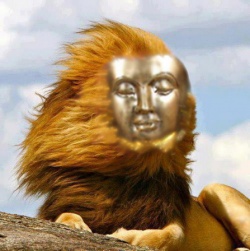Purifying impure perception
purifying impure perception In Tibetan Buddhism, retreat is critical to learning and growing. The main purpose of visualization practice is to purify our ordinary, impure perception of the phenomenal world by developing “pure perception.” “Impure” does not mean that the object of our visualization is covered with dirt or is polluted or defiled in any way; the impurity isn’t “out there.” “Impure,” in this context, means that the problem is “in here”—that is, we look at the world through emotional filters that we label “desire,” “jealousy,” “pride,” “ignorance,” and “aggression.” Everything we perceive is colored by myriad variations of these five emotions.
Why is it so important to recite Mantras and what are they? Just as we visualize ourselves as a deity and the surroundings as a buddha-field in order to purify our impure perception of form, we recite mantras to purify our impure perception of sound. The goal of practice is to purify impure perceptions in order to see ultimate truth and, eventually, attain enlightenment and Buddhahood for the benefit of all beings. Vajrayana not only trains the mind through discipline and meditation on compassion, but it also offers methods for transforming our impure perception into pure perception.
